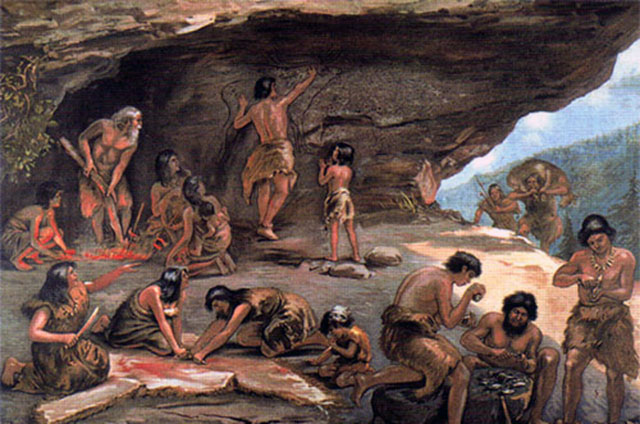Indian Paleolithic Age – W.B.C.S. Examination Notes On – Anthropology.
The oldest artifacts yet found on the subcontinent, marking what may be called the beginning of the Indian Lower Paleolithic, come from the western end of the Shiwalik Range, near Rawalpindi in northern Pakistan.Continue Reading Indian Paleolithic Age – W.B.C.S. Examination Notes On – Anthropology.
These quartzite pebble tools and flakes date to about two million years ago, according to paleomagnetic analysis, and represent a pre-hand-ax industry of a type that appears to have persisted for an extensive period thereafter.
The artifacts are associated with extremely rich sedimentary evidence and fossil fauna, but thus far no correlative hominin (i.e., members of the human lineage) remains have been found. In the same region the earliest hand axes (of the type commonly associated with Acheulean industry) have been dated paleomagnetically to about 500,000 years ago.
The Great Indian Desert, straddling what is now the southern half of the India-Pakistan border, supplied significant archaeological materials in the late 20th century.
Hand axes found at Didwana, Rajasthan, similar to those from the Shiwalik Range, yield slightly younger dates of about 400,000 years ago. Examination of the desert soil strata and other evidence has revealed a correlation between prevailing climates and the successive levels of technology that constitute the Paleolithic. For example, a prolonged humid phase, as attested by reddish brown soil with a deep profile, appears to have commenced some 140,000 years ago and lasted until about 25,000 years ago, roughly the extent of the Middle Paleolithic Period. During that time the area of the present desert provided a rich environment for hunting. The Rohri Hills, located at the Indus River margins of the desert, contain a group of sites associated with sources of chert, a type of stone that is a principal raw material for making tools and weapons.
Evidence surrounding these chert bands—in an alluvial plain otherwise largely devoid of stone—suggests their development as a major factory centre during the Middle Paleolithic. The transition in this same region to a drier climate during the period from about 40,000 to about 25,000 years ago coincides with the onset of the Upper Paleolithic, which lasted until about 15,000 years ago. The basic innovation marking this stage is the production of parallel-sided blades from a prepared core. Also, tools of the Upper Paleolithic exhibit adaptations for working particular materials, such as leather, wood, and bone. The earliest rock paintings yet discovered in the region date to the Upper Paleolithic.
Other important Paleolithic sites that have been excavated include those at Hunsgi in Karnataka state, at Sanghao cave in North-West Frontier Province, Pakistan, and in the Vindhya Range separating the Ganges basin from the Deccan plateau. At the latter, local workers readily identified a weathered Upper Paleolithic limestone carving as a representation of a mother goddess.
Please subscribe here to get all future updates on this post/page/category/website


 Toll Free 1800 572 9282
Toll Free 1800 572 9282  mailus@wbcsmadeeasy.in
mailus@wbcsmadeeasy.in



















































































































